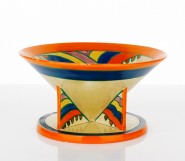Lot #17 - 1961 BMW R27 - The last of a long line of shaft-driven single-cylinder BMW motorcycles
-
Auction House:Donington Auctions
-
Sale Name:Collectors' Motorcycle Auction
-
Sale Date:03 Jul 2022 ~ 2pm (AEST)
-
Lot #:17
-
Lot Description:1961 BMW R27 - The last of a long line of shaft-driven single-cylinder BMW motorcycles
Frame number; 375046; Engine number; 375046 This 1961 BMW R27 carries the coveted "triple matching numbers" of engine, frame, and identification plate. It was originally sold by Tom Byrne in Sydney, and was registered in Victoria on club plates until 2009. It has had some improvements, such as an additional ignition switch on the headlight (using an existing hole so as not to affect originality). Unlike other BMW singles of the era, R27 electrics were upgraded to automotive specification, with an external ignition coil and large regulator, accessible under the petrol tank. The points were easily accessible via a small cover on the engine. Other period optional extras include bar end blinkers, rear toaster rack and a comfortable single seat. We are informed by the vendor the bike is in good running order. This motorcycle is sold unregistered. -
References:To view high resolution images of the motorcycles, please follow this Dropbox link: https://www.dropbox.com/scl/fo/n5bcjb2nuoc16t4y3k5hs/h?dl=0&rlkey=exyqlbxilyvv4n3ue8jmppkbx
-
Notes:BMW's first single was the R39. Released in 1925, the R39 was the first of a range of single cylinder models that lasted through until 1966. These were always quite advanced in specification but only provided adequate performance. While BMW's singles have never garnered the following of the twins, in Germany the singles often outsold the more expensive boxers, especially during the 1930s and 1950s. In the two decades, from 1948 through until 1969, 62 per cent of BMW motorcycles produced were singles. The R27 was the last of this long lineage. The R39 established the basic blueprint for BMW singles that would last the next forty years. While it was intended as a budget model, the specification was surprisingly high. Like the boxer twins the 250cc engine was mounted longitudinally in the frame, but with a vertical cylinder, and shaft drive. The gearbox bolted directly to the crankcase, driven through a single plate dry clutch mounted to the flywheel. A wide range of singles was offered throughout the 1930s, culminating in the R23 in 1938. When BMW recommenced motorcycle production after World War II, Allied requirements restricted the displacement to 250 cc. As all the drawings for all BMW products were requisitioned by the Americans so a pre-war R23 was stripped down and minutely measured. Released in 1948, the R24 was extremely popular and production continued through until 1950 when the R25 replaced it. The R25 received a welded tubular steel frame that was suitable for sidecar attachment, and plunger rear suspension. Evolutionary versions saw the R25/2 in 1951 and the R25/3 in 1953. During the early 1950s, the R25 singles proved extremely popular in Germany. This was a period where cheap transportation was in demand, and while the BMW 250s only provided barely adequate performance, they were quality machines, built to last. However, circumstances had changed by 1955. The domestic market had reached saturation and a more modern motorcycle was required for export. Following on from the R50 and R69 of 1955, the 250cc single also received an Earles-fork and a rear swingarm for 1956. The tail shaft was also improved over previous plunger frame designs. The new model was the R26, and while motorcycle sales were generally extremely depressed during the latter half of the 1950s, the R26 proved surprisingly popular, particularly for export markets in Third-World countries. More than half the motorcycle production between 1956 and 1960 comprised the R26. The R26 chassis was very similar in layout to the R50, providing improved handling and comfort over the old plunger frame R25/3. The weight was also increased slightly, so the engine was uprated. During BMW's 1960 restructuring the R26 evolved into the R27. Although essentially similar, the 247cc (68x68mm) overhead valve engine now produced 18 hp, at a considerably higher 7,400 rpm. The Bing carburettor was a Type 1/26/68. The compression ratio was increased to 8.2:1, and there was a new camshaft. The contact breaker was positioned on the front of the camshaft, and there was a spring-loaded tensioner for the timing chain. The most significant development though was the engine was now rubber mounted to quell the increased vibration. The engine and gearbox were supported by rubber mounts in four locations in the duplex frame, along with a rubber cylinder head bracket and two fore and aft rubbers on the front and rear to limit longitudinal movement. In all other respects though the chassis was identical to the R26 and the R27 weighed a rather solid 162kg. The R27 was intended to be the biggest seller in the revamped motorcycle range of the early 1960s, but it was too expensive and still only offered barely adequate performance. Production of BMW singles numbered more than 230,000, with more than 15,000 R27s, over their forty-one year lifespan, and they successfully provided reliable and inexpensive transportation.
-
Estimate:A$14,000 - 16,000
-
Realised Price:
-
Category:Automobiles & Accessories
This Sale has been held and this item is no longer available. Details are provided for information purposes only.










